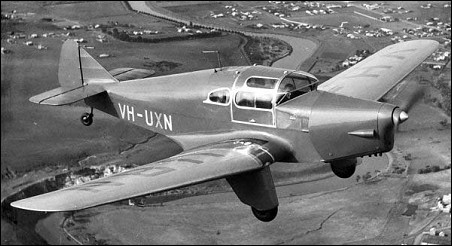| Andres Erdös, e-mail, 07.09.2012 01:41 The Merlin was designed by F.G. Miles of Philips and Powis, as a result of collaboration with G. Birkett of Birkett Air Service Ltd, and Tata Sons Ltd of India. It was based on the three-seat and four-seat versions of the M.3 Falcon, but with wider fuselage and consequent increased wing span. It was a low-wing monoplane, with fixed main undercarriage in trouser fairings plus a fixed tailwheel. Construction was mainly of wood, with spruce frames and three-ply birch covering, and the wings had hydraulically-operated split flaps. It was powered by a 200 hp de Havilland Gipsy Six piston engine. It was first designated M.4 Merlin, but all four examples were completed as M.4A Merlin, with fixed pitch propeller instead of the intended variable pitch unit.
On 11 May 1935, the prototype (U-8, later G-ADFE), built by Philips and Powis (Miles Aircraft), first flew at Woodley Aerodrome, piloted by F.G. Miles. A few weeks later, the Merlin was delivered to Birkett Air Service, for its air taxi and charter business based at Heston Aerodrome. Two aircraft were built, and delivered to Tata Sons Ltd for its Tata Air Lines service on the Karachi-Madras route. The fourth and final Merlin was delivered to E. Chaseling of Victorian and Interstate Airways in Australia, for its Melbourne-Hay service. In 1940, the Australian Merlin was impressed into the Royal Australian Air Force.
General characteristics-
Crew: 1
Capacity: 4 passengers
Length: 25 ft 10 in (7.87 m)
Wingspan: 37 ft 0 in (11.27 m)
Height: 9 ft 7 in (2.92 m)
Wing area: 196 ft2 (18.21 m2)
Empty weight: 1700 lb (770 kg)
Gross weight: 3000 lb (1360 kg)
Powerplant: 1 × de Havilland Gipsy Six piston engine, 200 hp (150 kW) each
Performance-
Maximum speed: 155 mph (250 km /h)
Cruise speed: 145 mph (245 km /h)
Range: 700 miles (1130 km)
Service ceiling: 18000 ft (5490 m)
Rate of climb: 900 ft /min (4.6 m /s) reply |











